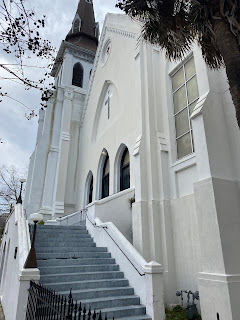USNS Comfort and USNS Mercy
“Tell us please, what treatment in an emergency is administered by ear?"....I met his gaze and I did not blink. "Words of comfort," I said to my father.”
― Abraham Verghese in “Cutting for Stone”
“These clinical moments lay bare the normative and moral work of physicians, endeavors that have historically provided the foundation for sustained therapeutic activity between patients and physicians. They also reveal a larger truth that if the arc of medicine is to ultimately bend toward healing, mercy will be its fulcrum.”
- TP Daaleman
Blessed are the merciful,
for they will be shown mercy.
Matthew 5:7 (NIV)
The ships USNS Comfort and USNS Mercy have sailed and arrived at the ports of need. What are we to understand of how their mission will live into their names? What do we understand about those names and the missions of healing in so many places of need?
“Healing Comfort” is not comfortable. There are risky and vulnerable acts that "sail" directly into the threat and stand with those who are both infected and inflicted with suffering. It is an act of Love. We have seen it before and we know it when we see it. It is found in places and activities that we usually label as the “arts”. For Christians, it is found in the symbol of the “red cross” on the sides of both these ships.
“Healing Mercy” is not about what we do. It is about what we receive. It is free. It requires an openness and receptivity that is not a common human behavior. It is part of the same reality of God’s Grace. It is a particular reality during Lent as we come to more deeply understand and celebrate new realities in our lives.
We have stories to tell about how our lives will be changed by these two prophetic words of Hope.
Thanks be to the God of Comfort and Mercy.
Marvin
References:
USNS Mercy, USNS Comfort: 2020 COVID-19 Deployment (26 March 2020)
Verghese, A. (2010). Cutting for Stone (1st ed.). Vintage Books.
Daaleman TP. A piece of my mind. The quality of mercy: will you be my doctor?.
JAMA. 312(18):1863-4, 2014 Nov 12.
Hage, M. L. (2015). The Challenge.





